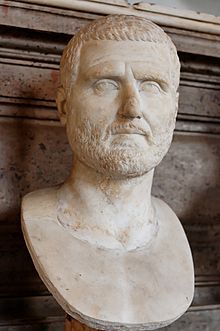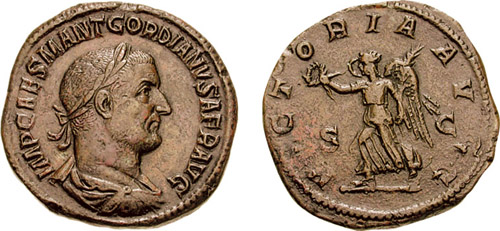 |
| Bust in the Capitoline Museum, Rome, attributed as Gordian I. From Wikipedia Commons. |
It looks far more like Aurelian and matches his depiction on his coins, below are some examples I have owned.
 |
| AE Antoninianus of Aurelian, mint of Cyzicus. RIC V, I 347, 272-273 A.D. |
 |
| AE Antoninianus of Aurelian, mint of Cyzicus. RIC V, I 349 variation, 272-273 A.D. |
 |
| AE Antoninianus of Aurelian, mint of Cyzicus. RIC V, I 349 variation, 272-273 A.D. |
 |
| Side view of "Gordian I" bust from Pinterest.com https://uk.pinterest.com/pin/439171401147899267/ |
As Emperor he never set foot in Rome.
(The "Gordian I bust also bears no resemblance to Gordian II, son of Gordian I. He was always depicted bald on his coinage. Like his father he never set foot in Rome as Emperor, "reigning" for around three weeks, 22 March - 12 April 238 AD and was killed outside Carthage leading local troops against the third Legion Augusta.)
Gordian I was 79 years old when he committed suicide, after his son was defeated and killed outside Carthage. Whilst it could be thought the "Gordian I" bust depicts him in his prime instead of at age 79 (just as Augustus, 27 BC-14 AD, only had busts issued that showed him in his prime), taking into account the other mentioned factors, this being a bust of him is unlikely.
Aurelian reigned from September 270 AD - September 275 AD.
As Emperor he not only set foot in Rome but ordered the construction of the walls that bear his name.
Yet there is no known bust of Aurelian.
The style of the bust would conform to that of the late 3rd century.

